#Matilda lady of the English
Explore tagged Tumblr posts
Text

All the blossoms in my garden 🪴
An Angevin-Plantagenets family tree I made for my medieval art collection zine, “If All The World Were Mine!” The physical edition is now available, so check it out if you can :D
#the plantagenets#plantagenets#medieval#12th century#geoffrey of anjou#geoffrey plantagenet#Matilda of england#matilda lady of the english#henry ii of england#eleanor of aquitaine#henry the young king#matilda duchess of saxony#richard the lionheart#geoffrey duke of brittany#eleanor of castile#joanna of sicily#john lackland#john i of england#richard i of england#louis vii of france#philip ii of france#philip augustus#whew thats a lotta names#melusine#my art#family tree
75 notes
·
View notes
Text
This bit of Medieval history from England will sound somewhat familiar.
Henry I sired two dozen or more children out of wedlock. But with his queen, Matilda, he had only a daughter, the future “Empress” Matilda, and a son, William. With William’s birth, the foremost responsibility of medieval queenship was fulfilled: There would be a male heir. Then tragedy struck. In 1120, a drunken 17-year-old William attempted a nighttime crossing of the English Channel. When his also-inebriated helmsmen hit a rock, the prince drowned.
Kids, don't go sailing when drunk. An accident could lead to a war of succession.
The queen had died two years earlier, so Henry remarried. But he and his second wife, Adeliza of Louvain, had no children together. The cradle sat empty, and the sands in Henry’s hourglass ran low, so he resolved that his lone legitimate child, Matilda, would take the throne as a ruling queen. The move was unprecedented in medieval England. A queen could exert influence in her husband’s physical absence or when, after a king’s death, their son was a minor. Her role, moreover, as an intimate confidant and counselor could be consequential.
A quick reminder that this was 400+ years before Mary I – England's first female reigning monarch. They were still speaking Middle English in the early 12th century.
But a queen was not expected to swing a sword or lead troops into battle and forge the personal loyalties on which kingship rested, to say nothing of the misogyny inherent in medieval English society. The queen was the conduit through which power was transferred by marriage and childbirth, not its exclusive wielder. [ ... ] Henry I pursued measures to make his daughter palatable to them. Matilda, who had married the Holy Roman Emperor Henry V in 1114, returned to England a widow in 1125. Henry I, determined to forge a sacramental bond between his daughter and England’s magnates, compelled his barons in 1127 to swear their support for her as his successor. Henry I then turned to arranging a marriage for Matilda so she could give birth to a grandson and buttress her position.
After Matilda’s nuptials with Geoffrey, Count of Anjou, the barons were summoned to renew their oath to her in 1131. A son, Henry, was born two years later, and a third pledge followed. Henry I died two years later of food poisoning after eating eels, a favorite dish of his.
Of course, all hell breaks loose after the king dies.
Stephen of Blois, a son from the marriage of Henry I’s sister Adela to a French count, aggressively registered a claim to the crown after Henry I’s death. Many English magnates conveniently forgot their oaths to Matilda, and Stephen became king. Matilda was not without supporters: her half-brother Robert, Earl of Gloucester; her husband, the Count of Anjou; nobles disaffected by Stephen’s rule; and opportunists seeking personal gain from the conflict. Matilda resisted, and the Anarchy ensued. Forces supporting Matilda invaded England in 1139, but save for a moment in 1141, she never ruled. She then focused instead on elevating her son to the crown.
Military success speaks louder than oaths or pledges.
Prosecution of the war ultimately passed to the young Henry. His mounting military successes jogged the barons’ memory of their past commitments, and the contending parties reached a settlement. Henry would succeed Stephen. With Stephen’s death, Henry became Henry II.
It isn't exactly like the Targaryen civil war but the themes are similar.
Matilda, daughter of Henry I and mother of Henry II.

#game of thrones#house of the dragon#rhaenyra targaryen#the anarchy#matilda – lady of the english#henry i#gra o tron#ród smoka#la maison du dragon#дім дракона#آل التنين#juego de tronos#jogo dos tronos#a casa do dragão#la casa del dragón#龙之家族#ejderha evi#ड्रैगन का घर#��우스 오브 드래곤#בית הדר��ון#হাউস অফ দ্য ড্রাগন#rod draka#lohikäärmeen talo#gia tộc rồng#ڈریگن ہاؤس#sárkányok háza#σπίτι του δράκου#дом дракона#haus des drachen#кућа змаја
2 notes
·
View notes
Text
peanuts



lottie matthews x gn!reader
summary: the one where you bring pb&j sandwiches for lottie everyday since you were 9.
warnings: so much fluffiness i might throw up, short silly fic, lottie and reader are childhood friends and secretly in love, no crash, lottie has a bad relationship with her parents, cute little unexpected ending i guess?, english mistakes, not proofread
you and lottie were friends since you were nine years old.
you remember being inside the car with your parents when you moved to new jersey. the roads were bumpy before you could make it to the city of wiskayok. still, you insisted on carrying a book with you during the entire trip, knowing that you would feel nauseous in no time. your parents warned you but, as the quiet and moody kid that didn't want to move, you ignored their advice.
trying to focus on anything else besides your upset stomach, you place the book titled "matilda" by roald dahl, in perfect condition, by your side and decide to enjoy the view outside as the car moves along from the backseat. it wasn't a lifesaver but it was better than feeling your head heavy as you read the tiny words in the paper.
the houses were all the same. boring, lifeless and with a few flowers or bushes outside just to bring some color. what a lame city, you thought. no colorful houses, fun playgrounds or a nice park in sight. but that changed at the exact same moment as you saw lottie's house. a perfect planned garden in the front and impeccably painted walls capable of telling anyone that the house was pretty, yes, but the people living inside of it were superior. liking or not, the house was pretty but not as far pretty as her.
lottie was upstairs in the window of her bedroom when you saw her, you couldn't decide if she was staring outside like she was waiting for something or just watching people go by as if she was trapped inside. either way, she waved at you and, hesitantly, you waved back.
the following years consisted in sleepovers, movie nights and little discussions in the book club you two invented. safe to say that you became best friends almost too immediately.
lottie was a loner when she was home with no one to watch her except for a old lady that worked for the matthew's as a housekeeper or a nanny. you never knew and she was scary. playing pranks on her was almost a daily occurrence and an invention of lottie. like dyeing her clothes pink or switching salt and sugar and watching the distorted face of pure horror and agony in lottie's parents faces during dinner, when they invited you over. you and lottie had to cover your mouth or look down to not laugh but couldn't ever not exchange glances across the table.
her parents knew, of course. "your parents must be waiting for you. it's late isn't it?" was lottie's moms way of telling you to leave. you would say goodbye to lottie and hold her hand extra tight, knowing that the second the door closed behind you, you would hear her parents scolding her. you could see a curious mix between fear and excitement in her eyes when you were about to leave and you thought that that would be the last time she would prank that poor lady, but no. she would always come up with something new. deep down you knew that she was just craving attention from her parents and she would be glad to accept some mean words from them if it meant that they would talk to her instead of disappearing in work.
every day after the pranks were the same. the next morning, you showed up at school with two peanut butter and jelly sandwiches. one for you and the other one for lottie, of course. maybe it was your way of supporting her as you could. as a nine year old, peanut butter sandwiches were your favorite and you would always eat them if you were feeling sad. you never knew why she would eat it entirely and as fast as she could, kiss your cheek and run away, telling you she was late. it was lunch time and she was nine. what could she possibly be late for?
but the smile on her face exposing her teeth shaped like little fangs every single time she saw you with a simple extra sandwich on hands made just for her, became your new favorite thing in the world.
during your teenage years, nothing changed. almost nothing. lottie was still a loner at home but was kind of a popular girl at school. not like your other friend jackie, but still popular. you and lottie tried for the wiskayok high yellowjackets; a girl's soccer team. you both made it to the team and quickly made some new friendships but nothing as close as what you two had. you were popular as well, sure, but you didn't care about that. it took you a few weeks to realize that jackie was popular because of her personality. you, lottie and other girls were popular because you were on the team.
regardless, after every unsuccessful exam, every bad moment with lottie's parents, every failed practice day, you were right by her side holding a sandwich with silly drawings made out of peanut butter and jelly. despite being best friends, you were both changing. different hair, different ways of dressing, different ways to look at each other. the only thing that never truly changed was the smile on lottie's lips and it was exactly like how you remember from when you were nine.
there was that one day when lottie had an awful day at practice after a fight with her parents last night and she was sitting on the aluminun bench in the locker room. she had her head down and her dark curls styled in low pigtails.
"hi." you sit by her side. she looks up and you notice her red eyes. "hi." she whispers. lottie would never let people see her in vulnerable moments but near you, she wouldn't hide a thing.
"should i go to your house in the middle of the night and dye your parents clothes pink like when we were kids?" your voice was playful but you knew that if the answer was yes, you would happily do it.
you feel your heart beating faster as you hear lottie's breathy laugh and feel proud of yourself for making her happy now. then, in a few seconds, the weak smile faded and the locker room fell into silence.
"do you think i'm a freak?" her words make your heart shatter. lottie would tell you everything, except from that one big secret thing that she was forbidden to talk about by her parents. you never mentioned it after noticing how she would get uncomfortable. or after noticing how her parents would always change the conversation to something else if she was blabbing too much. or when you saw a small orange bottle with pills inside with a label that said "charlotte matthews".
you take a moment to think of something to say until you realize that there was no right thing. lottie just wanted support. she needed your support. "i think you are strong." you say. you knew that she didn't have a choice, she had to be strong. but yet, it was something you admired in her.
"lott, i don't know what is happening and i won't ever force you to tell me. but i know you for years now and i know what you are." she remains quiet but at least she's still looking at you.
"you are so smart. brilliant, actually. you are great at soccer, you have an amazing fashion sense" you joke "a heart of gold."
"and you are beatiful."
lottie says nothing but you can see a subtle spark of relief in her eyes. instead, she hops closer to you and rest her head on your shoulder. you do the same, gently laying your head on top of hers. you were staring at that same old boring blue locker in front of you when you feel lottie's hand grabbing yours. you feel nothing but euphoria when she intertwined your fingers together as your hands were placed between you two.
your smile was so wide that you were actually happy that lottie couldn't see you. and you couldn't see her face as well but something was telling you that she was also smiling while her thumb was Involuntarily caressing your hand. you weren't sure if that was something that best friends did, at least not in such an intimate way. but you were hoping that it meant something more.
you hear steps getting louder and realize that practice was over and the girls were coming to change clothes. unanimously, you two distance yourselves from each other just in time and, taking a quick glance at lottie, you see her face entirely red.
"are you okay, lottie? we were worried. jackie said that she can dismiss you tomorrow." shauna gets closer to you two, touching lottie's shoulder and squeezing it softly in reassurance.
"it's okay. i'm all good." she looks up and smiles at her friend.
you stand up and grab your backpack, pulling out a small paper bag with something unmistakable inside. lottie and shauna look at you and still feeling a bit shaky, you handle it to lottie with a shy smirk and lots of mumble.
"peanut butter sandwich. to make you feel better, you know the drill, right?" you laugh awkwardly and lottie's cheeks that were just going back to its original color, got pinkish again. the same old smile was also there.
"thank you. movie night tonight?" she asks full of hope.
"absolutely. can't wait to watch drew barrymore in scream." you nod excitedly. later that night you would find out that she would only appear in the screen for ten minutes and lottie would make fun of you for that.
after you left, shauna tapped lottie's shoulder to catch her attention. she looked at shauna but her hands were carefully holding the paper bag against her body as if she was taking care of something precious.
"i thought you were allergic to peanuts?" shauna furrows her brows.
"yeah. but it's their favorite."
270 notes
·
View notes
Text
LGBT+ Victorians
Since it's Pride Month and Dracula Daily is going to be pretty quiet for most of June, I thought it might be good timing for a little 1890s queer history. Plus I wanted to give a bit more fuel to everyone's queer headcanons for Dracula characters!
Popping this under a cut because it's long.
The start of queer identity This is a massive generalisation, but for most of British history, being queer was about action and not about identity. The idea that people who wanted to have gay sex belonged to a specific group that was different to other people didn't exist for the most part, at least not at a societal level. (This was also true - more generalisation - for much of the western world. It was very much not true for large swathes of the rest of the world who thought about this in entirely different and varied ways).
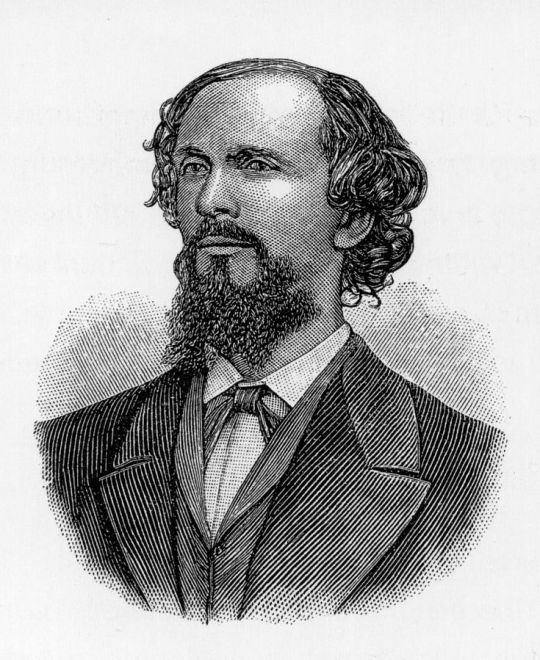
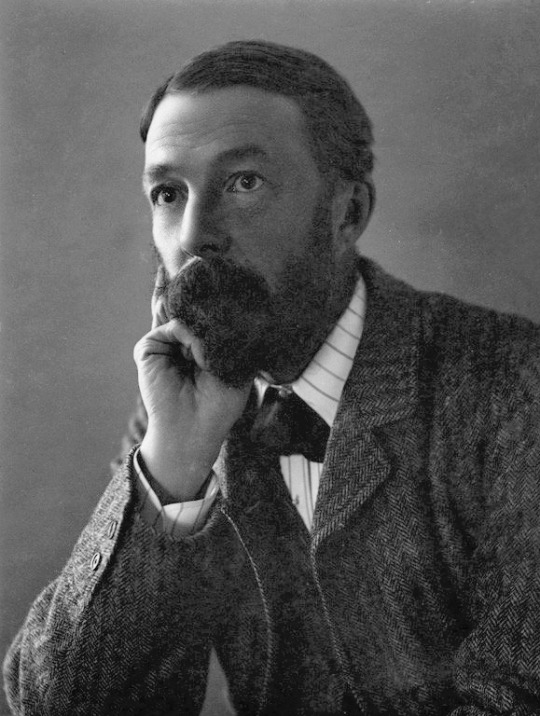
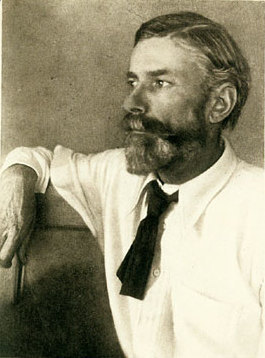
By the second half of the 19th century, that was starting to change. People like Karl Heinrich Ulrichs in Germany (on the left), and John Addington Symonds (middle) and Edward Carpenter (right) in the UK started to think of themselves as homosexuals - Ulrichs coined the term "Urning" which became "Uranian" in English. This period marked the beginning of organised campaigning for LGBT rights in the UK, though specific campaigning for lesbian and trans rights came later.
This means that in the 1890s setting of Dracula, any characters might think of themselves as "Uranian" or "Sapphic", or they might not yet have picked up that way of thinking. At a guess I'd expect Seward or van Helsing to be particularly aware of the new theory around homosexuality.
LGBT rights in law It was a mixed time for the legal position of LGBT people. The death penalty for sodomy was abolished in 1861 in England, Wales and Ireland (1889 in Scotland), and replaced with minimum 10 years hard labour. In 1871, two amab people, Boulton and Park, were tried for dressing as women, but the judge ruled that this was not an offence under English law (though he also said that he thought it should be).
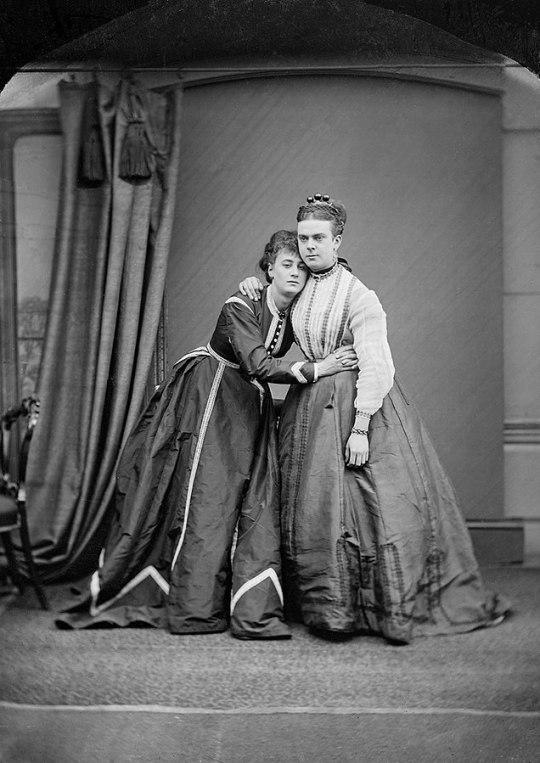
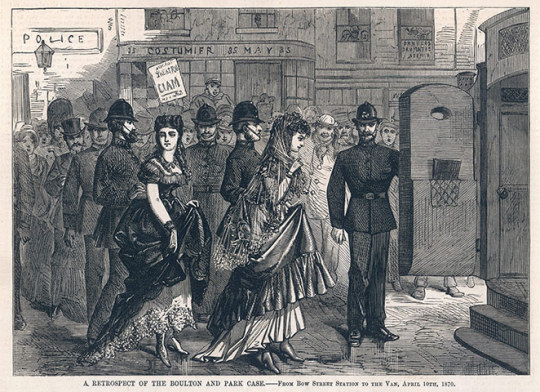
On the left: Fanny Park and Stella Boulton; on the right, the Illustrated Police News' depiction of their arrest.
And in 1885, the Criminal Law Amendment Act reduced the minimum sentence for gross indecency from 10 years' hard labour to two.
That said, before that act was introduced, there had to be a witness to any sodomy or gross indecency for it to be prosecuted. The Criminal Law Amendment Act changed that, so all private acts, arguably even love letters, could be prosecuted. So despite the reduction in sentences, this change to the law made life harder for queer men in the 1880s and 1890s. From a Dracula perspective, this means that people would be much more careful about what they wrote down - significant for a novel made up of documents.
Lesbian sex has never been illegal in the UK. (The idea that this was because Queen Victoria didn't believe in lesbianism is a myth). But in the 18th century there were a series of prosecutions of afab people who lived as men and married women. They were prosecuted for fraud when their birth sex was discovered, because they were perceived as having defrauded their wives. There were far fewer such prosecutions in the 19th century, possibly because of the belief that it was better not to create the publicity of a trial.
Victorian WLW There are HEAPS of notable Victorian lesbians and bisexual women, including a lot in the suffragette movement. So I've chosen a few examples based on there being good images on Wikipedia.
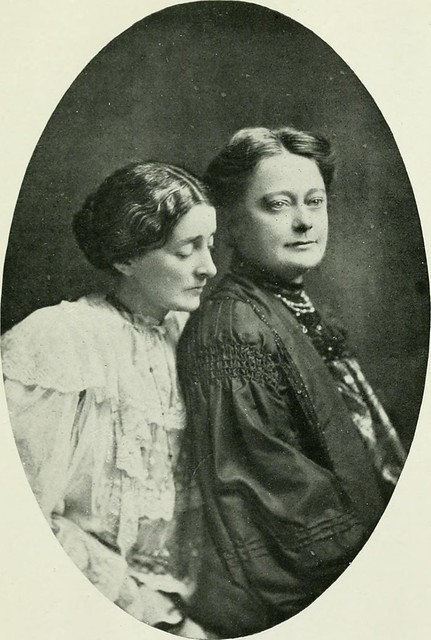
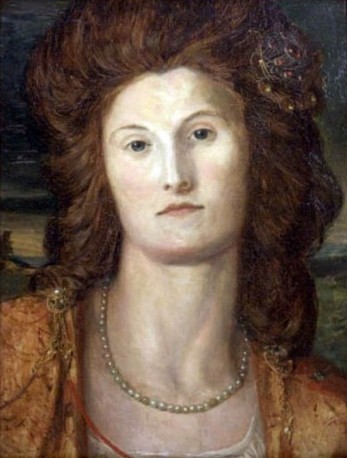
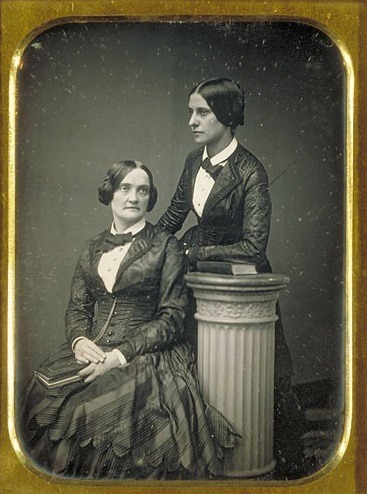
From left to right:
Margaret Benson and Janet (Nettie) Gourlay were Egyptologists who met at the excavation of the Precinct of Mut. Almost all of Benson's family preferred same-sex relationships.
Louisa Baring, Lady Ashburton, was briefly married to a man, but when she was widowed, began a 25-year relationship with American sculptor Harriet Hosmer. Harriet described herself as Louisa's "hubby".
Matilda Hays was a mixed-race writer and actress who had a relationship with American actress Charlotte Cushman, with whom she's pictured. Hays aimed to use her writing to improve the condition of women.
Victorian MLM Again, I've chosen people to highlight through the very representative method of good photos.
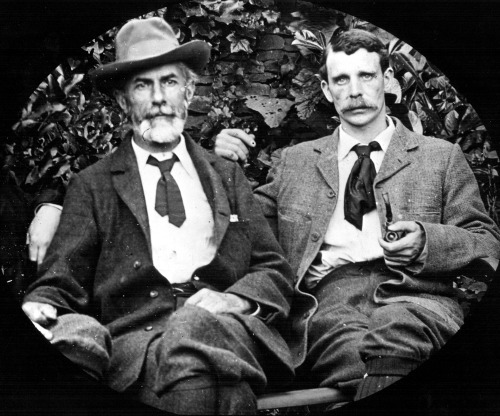


From left to right:
Edward Carpenter was a socialist, poet, philosopher and early gay rights activist who met his partner George Merrill on a train. The two men came from very different backgrounds: Carpenter from privilege, and Merrill from the Sheffield slums. Their 40-year relationship inspired the ending of EM Forster's novel Maurice.
Charles Ricketts and Charles Haslewood Shannon were artists who met as teenagers and lived together for more than 50 years. In the Times' obituary for Ricketts in 1931, their relationship was described as being "as remarkable as any of the great historic friendships, or the finest Darby and Joan examples of wedded felicity".
Ned Warren and John Marshall were art collectors who together were largely responsible for the Roman and Greek Art Collection of the Boston Museum of Fine Arts and the Metropolitan Museum of Art. Marshall married Warren's cousin, Mary Bliss, but only on the condition that the marriage would not be consummated. All three lived together until they died and were buried in the same tomb.
Trans Victorians I wrote last year about Dr James Barry, a Victorian trans man, in the context of whether Jack Seward could be trans. (The post is from October, but spoiler free).
Eliza Edwards was an actress who died in 1833 at the age of 24. Her body was autopsied, and discovered to be - in the words of the autopsy - "a perfect man", which had apparently not been known to any of her friends or colleagues.
Harry Stokes was a bricklayer in Manchester, who was outed as trans in newspaper articles during his divorce 1838 and again after his death in 1859. He became something of a figure of fun after being first outed, but met another woman who lived with him as his life, and was broadly accepted by the local community as a trans man.
It was only through chance that James, Eliza and Harry were outed (and in James Barry's case, despite considerable efforts on his part). There might well have been hundreds or thousands more people like them.
And Boulton and Park, who I mentioned above, have usually been treated as transvestite men by historians, but could equally - had they had the terms themselves - be identified as trans women. Some contemporary newspaper articles even used she/her pronouns for them.
Asexual Victorians Asexuality is tricky to spot in history, though even in 1896, German sexologist Magnus Hirschfeld was identifying it as a distinct phenomenon. What we do know is that more than 10% of women and a little under 10% of men in the 1890s never married, and in some cases that may well have been because they were asexual or aromantic.
From a Dracula perspective, family rumour held that Florence Stoker declined sex with her husband after the birth of their child. That may or may not have been true (and there's a ring of aphobia to some of the family's claims) but it shows how asexual people might also be found in apparently conventional marriages.
Sources British Library: A Short History of LGBT Rights in the UK British Library: A timeline of LGBT communities in the UK Girlfriends of Dorothy: A Timeline of Lesbian Rights UK 1601 - 2020s (note: the site intends to be trans-inclusive, but genders John Barry as female.) Open University: Lesbianism and the criminal law of England and Wales “Constant Companions” and “Intimate Friends”: The Lives and Careers of Maggie Benson and Nettie Gourlay Sapphic sexuality: lesbian myth and reality in art and sculpture British Library: Transgender identities in the past Warp and Weft: The extraordinary life of Harry Stokes British Academy: Happy Families? Coitus Interruptus: Sex, Bram Stoker, and Dracula 'Missing person' Florence Stoker added to DIB
767 notes
·
View notes
Text
so i don’t understand what is *so* hard to get about the idea that rhaenyra being crowned as queen *peacefully* would’ve at least introduced the baby-step process that women can inherit the iron throne, even if it doesn’t automatically lead to absolute primogeniture and prompt benefits being established for -all- women.
book-wise we have one (ONLY one) inkling of how rhaenyra feels about the succession, and it’s that she doesn’t wish to alienate any more allies than she already had:


show-wise we have a vague and contradictory line of jace and baela’s sons inheriting the iron throne followed by luke and rhaena’s children inheriting the driftwood throne, which just seems like an inconsistency in the writer’s room, but why is that *such* an issue for those that support aegon’s claim to begin with? rhaenyra only has sons (biologically) at this point, so we really don’t know whether or not she would’ve named a daughter as her heir over a son, but this thought process derives from real history. eventually female heirs were allowed in certain circumstances but male children were *always* preferred (until recently). this still doesn’t change what her reign would’ve entailed had there not been war. rhaenyra is allowed to fight for the right her father granted onto her when she was 8 years old, aegon was not entitled to it simply because he was born with a penis and his mother raised him to believe that made him special.
jeyne arryn, one of her staunchest allies, point blank states what will happen to women heirs and ladies in their own right if the greens are allowed to repudiate the succession, because it’s something she -personally- had gone through:
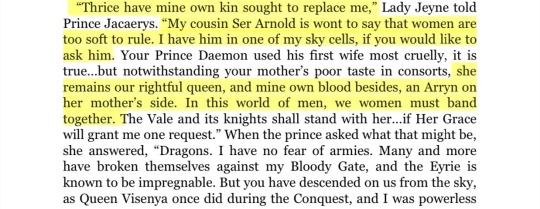
“in this world of men, we women must band together,” the green council states that they cannot rely on the eyrie for support due to is presently being ruled by a WOMAN. they knew what this would mean for women moving forward.
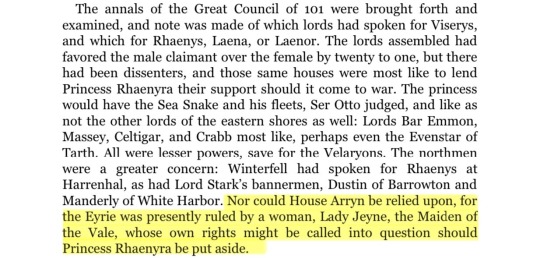
if we were to look into the history of english monarchs the first (official) queen regnant of england was mary i, who ruled for five years, and didn’t make any changes to the rules of succession during her reign (any that involved gender, any battles she faced mostly had to do with religion). she was followed by her sister elizabeth i, who ruled for 45 years, and made no changes to the rules of succession. both of whom ascended as queen because there were no male relatives alive at the time, but each obviously proved that women were just as capable of men ruling, releasing at least some of the stigma surrounding that subject during their time alive. it wasn’t even until recently, during the reign of elizabeth ii (in 2013, specifically), that absolute primogeniture was enacted into law, ending the system of male-preference cognitive primogeniture. mary became queen in october of 1553, so it took 460 years for this change to occur.
rhaenyra is based off empress matilda, daughter of henry i, who would’ve been the first queen regnant of england had she not been challenged and deposed by her cousin, stephen of blois, in a war known as the anarchy; with it ultimately ending when a peace treaty was signed by both stephen and matilda, with her son henry ii named as stephen’s successor upon his death (which happened a year later). this war began in 1135, which was 878 years before the succession was formally changed and 418 years before england would actually see a queen on the throne. this is just to put it into perspective how one queen is not going to immediately enact change for the betterment of all women whilst attempting to rule an age-old abhorrent system, but saying that they had no bearing on succession laws and gender equality moving forward is wild.
not only did rhaenyra only reign for six months, she was in the middle of a civil war that had resulted in the deaths of four of her children (as far as she knew) at that point. among that the treasury had been depleted and sent to green loyalists, so she was taking over a country with virtually no money at hand. her reign was damned from the start, and her near broken mental state led her to make some bad decisions. from the beginning of her heir ship she was looked down upon for being a woman; her stepmother spread vile rumors about her virginity when was in her early teens, her sworn shield groomed and took advantage of her, her siblings were raised to hate her and view her as a threat to THEIR birthright and lives, her father was nigh on useless in protecting her against any of this due to his pacifist and pushover nature. she was usurped because she was a woman, and ultimately killed because she was a woman. denying the tragedy of her life is refusing to understand the deeper components of the story being told.
if women aren’t even able to hold offices of high power how is anything supposed to change for those in even worse circumstances? women didn’t gain semi equal rights by being silent and subservient to the men around them, they gained them by fighting back against the status quo; by marching, lobbying their politicians, lecturing those willing and unwilling to listen to their plight, causing civil disobedience, etc. we shouldn’t condemn those that do not have the will nor the ability to participate in these events, but refusing to understand their opposites and overtly criticizing how imperfect they are or blaming them for their suffering is not the way to go.
once again, rhaenyra is not a feminist, but she should be seen as a proto-feminist figure by us, the audience, for her will to stake her claim as the first woman to sit the iron throne. her usurpation and subsequent murder leads to the death of all dragons, a catastrophic consequence considering her parallels to the amethyst empress and the dire stakes at hand in regard to the second long night.
#house of the dragon#hotd#fire and blood#rhaenyra targaryen#pro rhaenyra targaryen#team black#pro team black#anti team green#anti team green stans#real feminists do NOT support the patriarchy just bc it’s headed by misogynistic white woman who cries prettily#and thinks she’s the only exception to the ‘no women in power rule’ AND a violent misogynistic rapist as king#i would think this should be obvious#but hotd has allowed some truly braindead takes to spread#all by sex obsessed airheads that can’t differentiate attractive actors from the characters they play#if you see any mistakes in this NO YOU DIDNT
118 notes
·
View notes
Text
With Matilda you can really see the difficulties for a woman trying to navigate a system intended for a male to be in, which meant going against what society expected of a woman.
During [the spring and summer of 1141], a number of contemporary narrative sources agreed that Matilda’s sudden and unexpected success went straight to her head. Matilda’s most renowned modern biographer has suggested that “conduct acceptable in a powerful king . . . was not acceptable in a ‘Lady of the English’. This line of reasoning can be taken quite a bit further. It is clear that contemporaries expected Matilda to emulate the behavior of those women who had previously held the rank of regina, and act like a queen consort while performing the office of king. Most queens consort, however, did not have to consolidate recognition of their position as Matilda was constrained to do. Nearly all the chroniclers who had marveled at her assumption of power turned on her immediately. Not surprisingly, the Gesta Stephani took the greatest exception:
She at once put on an extremely arrogant demeanor instead of the modest gait and bearing proper to the gentle sex, began to walk and speak and do all things more stiffly and more haughtily than she had been wont.
But other more sympathetic chroniclers also joined this chorus of disapproval: Henry of Huntington described her as “elated with insufferable pride” while the Worcester chronicler noted her “hard heart” as she strove to consolidate her position. Had she been a man, Matilda’s decidedly authoritarian style might have passed for a regal show of strength. Indeed, Matilda probably felt that if she was to hold on to her newly acquired status, she needed to behave like a king. Thus, Matilda’s forward movement from recognition of her status to the execution of her office was fraught with gendered difficulties concerning how a woman ought to conduct herself.
...As she anticipated her crowning, Matilda strove to consolidate her dynastic claims and establish her authority. It seems reasonable to suppose that Matilda looked to her father and her first husband for examples of successful kingship as she did for representational purposes. Both Emperor Henry V and King Henry I were suspicious, uncompromising, relentless, and ruthless in the pursuit of their aims. Probably both would have advised Matilda to follow their example. This was exactly what St. Bernard told Queen Melisende of Jerusalem following the death of her husband: “show the man in the woman; order all things . . . so that those who see you will judge your works to be those of a king rather than a queen.” Much of Matilda’s behavior during the spring and summer of 1141 can be explained as the emulation of male gendered kingship. But kings had the built-in advantage of female consorts to soften the more hardboiled aspects of their rule; Matilda had played that very role herself for her first husband. Nevertheless, in 1141, Matilda eschewed the feminine aspects of queenship completely, in effect negating what could have been useful symbolism to bolster the construction of her authority. But for Matilda to be perceived as a soft, forgiving, and gentle woman at the one moment she needed to consolidate her position at the top of a male dominant political society would not have been practical.
But by constructing herself as a female feudal lord, and emulating male gendered kingship, Matilda annoyed contemporary observers. The chroniclers’ hostility may have been due to the fact that Matilda was claiming kingly sovereignty for herself alone, and not in association with either her husband or her eldest son. The Gesta Stephani described Matilda as not only arrogant, but also spurning the advice of her chief advisors, the earl of Gloucester, her uncle King David of Scotland, and the “kingmaker” himself, the Bishop of Winchester. The Gesta implied that if Matilda had behaved as a deferential woman, and heeded the counsel of her male advisors, she could have devised a means to permanently depose Stephen, and be crowned and anointed in his place. The Gesta placed Matilda’s ultimate failure at her own door, blaming it on her arrogant reliance on her inferior, womanly intellect and emotions.
Matilda’s hard-line stance, acceptable in a male king, bothered the authors of the Worcester chronicle and the Gesta, suggesting that contemporaries were confused by what they wanted the “Lady of the English” to do, indicating that, as a woman and a domina, she should behave gently like a queen rather than forcefully like a king. Combined, all the chroniclers, with the exception of Malmesbury, suggested that Matilda should have used the intercessory powers of queenship to set Stephen free, moderated the harsher aspects of her father’s rule, and excused the Londoners from financial support. Although a more diplomatic approach might have helped, freeing Stephen at that moment in time would have realistically served no practical purpose in establishing Matilda’s authority. And, in denying Eustace his inheritance, Matilda was only imitating the efforts of her father, Henry I, who also dealt harshly with challengers to his throne. Henry I kept his elder brother Robert Curthose in prison until he died, and prevented his nephew, William Clito, Curthose’s heir, from gaining any aspect of the Anglo-Norman inheritance. Matilda wished to convince her contemporaries that she was quite capable of being a king, but their reactions betrayed hostility toward her as a woman presuming to establish kingly authority.
-Charles Beem, "Empress Matilda and Female Lordship", The Lioness Roared: The Problems of Female Rule in English History"
20 notes
·
View notes
Text
Aster Button • Hogwarts Legacy MC • Character Information

(Character Sheet Commission by my amazing bestie, @unholytrio420)
❀。• *₊°。 ❀°。❀。• *₊°。 ❀°。❀。• *₊°。 ❀°。
General Information
Full Name: Aster Jane Button
Nicknames: Princess of Hufflepuff, Sweetheart & Bug
Gender: Female
Sexual Orientation: Pansexual
Date of Birth: April 30th, 1875
Dominate Hand: Left
Zodiac Sign: Taurus ☀️🌙 & Cancer ⬆️
Personality Type (MBTI): ENFP - Campaigner
Blood Status: Half-blood
Alignment: Lawful Good
Nationality: English/Greek
House: Hufflepuff
Wand: Natural shape, English Oak, Unicorn Hair Core, 20 cm, handle is carved with oak leaves and has an acorn on the bottom of the handle.

Patronus: Swarm of Bees or Ibizan Bound
(One is my wants, the other is wizarding worlds take)
Boggart: Herself
❀。• *₊°。 ❀°。❀。• *₊°。 ❀°。❀。• *₊°。 ❀°。
Physical Appearance
Hair Colour & Style: Has wavy/curly dark brown hair, with a bang fringe that curls at the ends because of her naturally curly hair. She tends to keep her hair half up in an updo with a white bow holding it back.
Eye Color: Her eyes are a dark green with a yellow center.
Skin Tone: Light olive tone with peach undertones. Has a flush of freckles all over her face. She also has light rosacea on her cheeks, nose and forehead.
Height: 5’7” (170cm)
Other features:
She does wear makeup, even though it was frowned upon at that time. She has a smudge of eyeliner on her upper lid and goes wear some lipstick/Vaseline for shine.
An overbite with bunny teeth.
Girly wears earrings as well. They are vintage screw backs from 1890 that match her colors and vibe. Gold & Black varnish with diamonds.

Face claim: Hande Ercel is her slight face claim. Hande Ercel has dark brown eyes and doesn’t have freckles, but she’s a Turkish actress with the perfect face shape. Which is why I say she’s a slight face claim. Her role in Azize just screams Aster with her hair as it is as well.


(The right photo was edited by Ellie to give her green eyes and freckles - she’s quite literally perfect!)
❀。• *₊°。 ❀°。❀。• *₊°。 ❀°。❀。• *₊°。 ❀°。
Personality
Positive Traits: extroverted, empathic, patient, elegant, down to earth, in tune with her emotions, lawful, dedicated, loving & kind
Neutral Traits: sensitive, tantalizing, sensual, dominant, can not lie for shite, work oriented & overthinks constantly
Negative Traits: opinionated, materialistic, dense, slow, kind of a mean girl in a domineering way, fair to a fault & spoiled
Scent: Lilac, Moss and Honey
Strengths: Being a walking bug magnet, saying ‘No’, Stability
Weaknesses: being yelled at, crying to easily, Numbers/Math (Dyslexic), dealing with parasites
Fears: Heights & The Dark
Likes: Her family, Insects, Bee Keeping, Running, Gardening, Eating, Talking, Cuddling
Dislikes: The Wizarding Realm, Passive Aggressive Rudeness, People who have a twisted reality that being blunt is actually being nice, Dark Magic, Racism, Slavery, Pure-Blood enthusiasts
Future Dreams: A normal happy life in research entomology
Favorite Classes: Charms, History of Magic, Herbology, Divination
Hated Classes: Potions, Defense Against the Dark Arts, Flying, Astronomy
Music Loves: Frank Sinatra, Vic Damone, Benny Goodman, Billie Holiday, Dean Martin, Ella Fitzgerald, Tony Bennett, Tommy Dorsey, Artie Shaw, etc.
Aesthetic: Honeycore Coquette

Love Language: Physical Touch & Companionship
Pinterest Board (important): https://pin.it/5APIW6Lqo
❀。• *₊°。 ❀°。❀。• *₊°。 ❀°。❀。• *₊°。 ❀°。
Relationships
Father: Theodore Button - Lord, Wizard, Business Man
Mother: Abigail Button - Lady, Normie, Socialite
Sibling(s): Timothy Button - Older brother, Future Lawyer, Normie
Distant Relatives: Percival Rackham - Many-Great Grandfather
Hogwarts Guardian(s): Matilda Weasley, Abraham Ronan, Aesop Sharp & Dinah Hecate
Love Interest: Sebastian Sallow
Best Friends: Nerida Roberts, Grace Pinch-Smedley, Ominis Gaunt, Adelaide Oakes, Anne Sallow
Rivals: Imelda Rayes
Enemies: Ranrok, Victor Rookwood, Ashwinders
Pets:
Ladybird Spider named Lily
All her bees
A full nest of Fwoopers
4 Nifflers - Quartz, Obsidian, Copper & Tin-Tin
2 Kneezles - Knee & Zazzy
2 Unicorns - June & August (Golden)
2 Hippogriff - Ares (Tawny) & Highwing
❀。• *₊°。 ❀°。❀。• *₊°。 ❀°。❀。• *₊°。 ❀°。
Outside Character Inspirations
Cher Horowitz - Clueless
Nausicaä of the Valley of the Wind
Elora Danan - Willow TV series
Willow Rosenberg - Buffy the Vampire Slayer
Lexi Howard - Euphoria
❀。• *₊°。 ❀°。❀。• *₊°。 ❀°。❀。• *₊°。 ❀°。
Shout out to the HL peep here on Tumblr that inspired me to do this. I lost their post and can’t find it now for some reason. So I apologize for not having you tagged, but thank you for inspiring me to get all my information out about my darling! If I ever get around to editing & typing up her true background, I will edit this to include. For now, here is my baby girl. Please enjoy her!
#hogwarts legacy mc#hogwarts legacy#Hogwarts Legacy Student ID#Hogwarts Legacy MC Information#Hogwarts Legacy Character Details#HLMC#Aster Button#my writing#my art#self insert oc#my coms
21 notes
·
View notes
Text


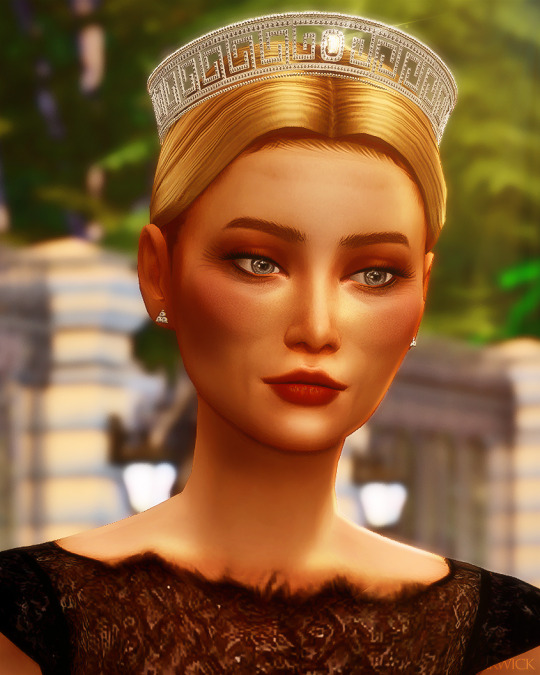

Sunderland's Royal Jewel Vault (18/∞) ♛
↬ Countess Wynn's Meander Tiara
The majority of the tiaras in the Sunderlandian collection were inherited through members of King Louis V's family, mainly previous queens Matilda Mary, Anne, and Katherine. This meander tiara however represents the current Wariwcks' French heritage, as it belonged to Queen Irene's mother, Marguerite Wynn. Countess Wynn was born in 1914 as Marguerite Delphine Lucie Chevrier. She was the eldest of four children born to industrialist Phillipe Édouard Chervrier (1880 - 1950) and his El Salvadoran wife, Consuelo Romana Gomez (1892 - 1979). Margurite's family claims ancestry from both French and Spanish nobility, although the bulk of their impressive fortune was derived from Phillipe's ceramics factory in the south of France. Much of Margurite's early life was disrupted by the First World War, during which the Chevriers settled in Mexico City with Consuelo's sister. Following the war, Marguerite flourished in high Parisian society, becoming well-versed in the arts and fluent in several languages, including English and Spanish. Expected to marry into the French aristocracy, Marguerite made waves by instead marrying John Wynn (1911 - 1973), a career soldier from Sunderland whose great family had fallen on hard times following the deaths of John's three older brothers in the war. When the couple met in 1931, John was on a mindless trek across Europe, in search of a wealthy bride. Despite their differing backgrounds, Marguerite was smitten by John's optimism and good humour. The pair married a year later, with John even converting to Catholicism to appease Marguerite's parents. Their wedding was held at the Chapel of the Palace of Versailles, one of the last grand society affairs of interwar Paris. The tiara, which featured a Greek key design punctuated by a central emerald-cut yellow diamond, was among Marguarite's wedding gifts. The jewel is ambiguous in origin but is agreed to be an early twentieth-century creation, likely from Cartier. It became a useful tool in Margurite's arsenal as she erupted in Sunderland as one of the country's wealthiest society ladies. Pearlie, as she became known, was noted to be arrogant, intelligent, and ravishing. Pearlie is more "royal" than the rest of us combined. She drenches herself in jewels as if she were the ghost of the last Tsarina. — Queen Katherine, 1970
The Countess owned the tiara until 1968, when she gave it to her youngest daughter, Lady Irene, also as a wedding present. Irene's marriage to the future King Louis V was Pearlie's greatest life achievement and she became increasingly boastful. Maman Wynn, as she was called by the press and public, was known to meddle in royal affairs, especially the personal lives of her daughter and son-in-law. By the early 1980s, she was on bad terms with both. Irene was never seen wearing her mother's tiara, but she kept it in her own personal possession for almost thirty years. In 1997, Irene continued the tradition by gifting the tiara to her only daughter, Princess Jacqueline, ahead of her wedding to Lawrence Belmont. The wedding was coincidently the last public appearance of the old Countess Wynn. She died peacefully at Chester Palace the same winter. Since then, Jacqueline has worn the tiara regularly at state functions and in official portraits. It's among the princess's most cherished pieces.
The Countess Wynn wears the tiara in a portrait, circa October 1943, eight years before the birth of her youngest daughter, Queen Irene
HRH Princess Jacqueline wears the tiara while attending a gala dinner & dance in July 2026
#warwick.jewels#✨#ch: irene#ch: jacqueline#ts4#ts4 story#ts4 royal#ts4 storytelling#ts4 edit#ts4 royal legacy#ts4 legacy#ts4 royalty#ts4 monarchy#ts4 screenshots#warwick.extras
61 notes
·
View notes
Text
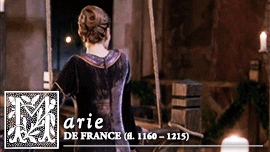

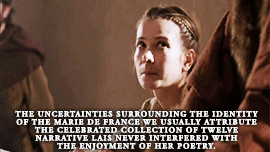
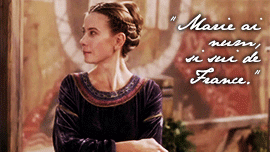
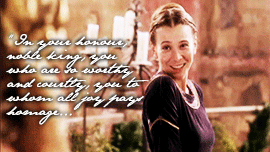
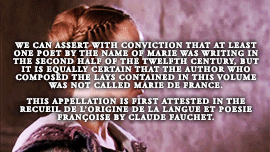
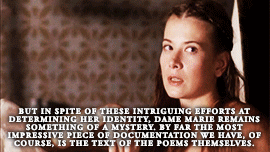
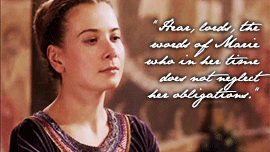


Medieval Women Week || Favorite woman writer ↬ Marie de France
Who was this versatile author, the first woman of her times to have written successfully in the vernacular? She was definitely not Marie de Champagne, daughter of Eleanor of Aquitaine and patroness of Chrétien de Troyes, as Winkler suggested. A tempting, but by no means fully convincing, identification is with Marie, abbess of Shaftesbury in Dorset, illegitimate daughter of Geoffrey Plantagenet and half-sister to Henry II. … A claim has been made, albeit somewhat thin, for Mary, abbess of Reading. This abbey was well known as a centre of literary activity and had in its possession the Harley manuscript containing, as we have seen, both the Fables and the Lais. There is no clear-cut reason why either work could not have been written by an abbess or a nun, and there is some slight evidence of experience of monastic life in Le Fresne, Yonec and Eliduc. But the prominence of the motif of adultery in the Lais (see also fables 44 and 45), Marie’s attitude towards the dissolution of marriage in Le Fresne and Eliduc, and her evident interest in the chivalric life suggest that these love poems were not written by someone steeped in ecclesiastical ideology. … Marie de France was certainly an educated lady of good family, who knew Latin well enough to have contemplated translating a Latin work into French (Lais, Prologue, vv. 28–32) and to have done so in the case of the Espurgatoire. She was obviously a good linguist and acquired a sound knowledge of English before translating the fables. She was also fully conversant with the life and aspirations of the nobility of her time. Her education could well have been obtained in a convent and her knowledge of court life from her upbringing and personal experiences in England. Was she Marie, the eighth child of Waleran de Meulan (also called Waleran de Beaumont), a member of one of the greatest of the Norman houses? Waleran’s fief was in the French Vexin, which would tally with Marie’s statement that she comes from France and explain her evident local knowledge of the town of Pitres in the Norman Vexin… Marie de Meulan married Hugh Talbot, baron of Cleuville, owner of lands in Herefordshire and Buckinghamshire, as well as in Normandy, and a member of a family prominent in several English counties including Devonshire, Gloucestershire and Kent. Marie’s father is an interesting figure – a loyal and courageous soldier, but also a well-educated man who may have written Latin verse. Moreover, several of the manuscripts of the Historia Regum Britanniae of Geoffrey of Monmouth are dedicated to him. It is tempting to think that his daughter may have known William of Gloucester, a possible Count William, as his father was also one of Geoffrey’s dedicatees. Marie de Meulan may, however, have been too young to be Marie de France, as her birth seems to date from the 1140s, perhaps as late as 1150. The most recent identification has been as Marie, countess of Boulogne after 1154, daughter of Stephen of Blois (King of England, 1135–54) and of Matilda of Boulogne. Educated in a convent, Marie de Boulogne became abbess of Romsey in Hampshire, but was removed from her convent by Henry II, who wanted to keep Boulogne in his sway. She was married off to Matthew of Flanders and thus became the sister-in-law of Hervé II, son of Guiomar of Léon... Eventually, at some time between 1168 and 1180, Marie de Boulogne returned to a convent, perhaps that of Sainte Austreberthe at Montreuil-sur-Mer in her own county. Her Count William could have been William of Mandeville, a crusade companion of Philip of Flanders, her husband’s brother. The ‘noble king’ would probably have been the Young King, as Philip and Matthew, originally supporters of Henry II, changed sides in 1173. Marie herself may have already been a supporter of the Young King, as in 1168 she sent Louis clandestine information about the secret negotiations between Henry and the Emperor Frederick. — The Lais of Marie de France translated with an introduction by Glyn S. Burgess and Keith Busby
#medievalwomenweek#marie de france#english history#french history#european history#women's history#medieval#history#nanshe's graphics
35 notes
·
View notes
Note
Hey! Can you recommend any good historical non fictional book about the anarchy? I tried to look for one but i don’t really know where to start
Okay, so this is a non-exhaustive list, and I tried to choose a good variety, but unlike say, the Tudors, there actually are not as many books specifically on the Anarchy as you might think! That said, here are a few:
She-Wolves, by Helen Castor so this one is not specifically about the Anarchy, but rather about powerful women and how they obtained, wielded, and held onto power pre-Elizabeth I. It does have a good section about Empress Matilda, and overall it's just a really good read if you want to understand women's power in the middle ages.
The White Ship: Conquest, Anarchy, and the Wrecking of Henry I's Dream, by Charles Spenser. This one basically follows the life of Henry I, the shipwreck that killed his son and heir, and the succession crisis an civil war that followed. It's relatively short for everything that it covers, but very readable in that it does not get too bogged down in detail.
Matilda: Empress, Queen, Warrior, by Catherine Hanley. This is a really well written biography of Empress Matilda. It's written for a lay audience rather than for academics, and covers a lot of Matilda's battle tactics and strategies, as well as covering a lot about medieval life in genera, including attitudes towards women, and why Matilda's claim was contested in spite of her claim being indisputably stronger than Stephen's (who was not her brother, but her cousin).
Matilda: Queen Consort, Queen Mother, and Lady of the English, by Marjorie Chibnall is another Matilda biography that @branwendaughterofllyr recommends. I haven't read this one myself but Branwen has good taste in non-fiction so I trust her judgment!
King Stephen, by Edmund King. To round things out, this is biography of King Stephen from the Yale University "English Monarchs" series. There aren't a lot of books out there that deal solely with Stephen, and Edmund King is probably the world's foremost scholar on his reign. This biography is a fair and I'd say mostly sympathetic treatment of Stephen. Definitely worth a read.
#asks#book recommendations#history#the anarchy#the empress matilda#medieval history#house of the dragon#hotd critical
47 notes
·
View notes
Text

Robert the Bruce was born in Turnberry Castle, Ayrshire on 11th July 1274.
Well where do we start with this one? I think the majority of us know about Robert and how he led us to victory at Bannockburn so I will put a bit background together of his immediate family.
His mother Marjorie, Countess of Carrick, I think nowadays the term we would use, and it's quite appropriate , is battle-axe. According to what has been written about her she held his father, Robert de Brus, 6th Lord of Annandaleprisoner until he agreed to marry her, it was through his mother that he drew most of his Scottish ancestry. The marriage must have worked for as well as Robert they had 7 more children.
After the Battle of Methven his wee brother Nigel de Brus was captured at Kildrummy Castle and was taken to Berwick to be hanged, drawn and beheaded for high treason, he was protecting Robert's wife, Elizabeth, his daughter Marjorie, his sisters Christina and Mary Bruce, and Isabella MacDuff, Countess of Buchan and helped them escape, although they were later captured by Balliol's army and handed over to Edward I. Nigel was executed for high treason by being hanged, drawn, and quartered in September 1306 at Berwick-upon-Tweed by the English. Two of his other brothers, Alexander and Thomas were also judicially murdered at Carlisle on Februaey 17th 1307 after being captured at Loch Ryan Galloway in 1207, after landing an invasion force consisting of eighteen galleys trying to take land from Dungal MacDouall, who was a supporter of the Comyns,.
Arguably the most famous of his siblings was Edward Bruce, if you have been paying attention you will remember his part in fighting with Robert at Bannockburn, he later went and fought in Ireland and indeed became King for a short time but lost his life in the Battle of Faughart, the, it's said the victor John de Bermingham then took his head to England to be put on display before Edward II.
Robert's sisters, Christina and Mary, as I said earlier were captured after the siege at Kildrummy, along with Isabella MacDuff, now Isabella crowned the Bruce at Scone, it was tradition that the MacDuffs performed the crowning of Scottish monarchs, Isabella arrived the day after Robert had been crowned but the Bruce agreed to second crowning as otherwise some would see the ceremony as irregular, not being performed by a MacDuff.Isabella was imprisoned in cages for four years of Isabella, Edward Longshanks is said to have commanded "Let her be closely confined in an abode of stone and iron made in the shape of a cross, and let her be hung up out of doors in the open air at Berwick, that both in life and after her death, she may be a spectacle and eternal reproach to travellers."
The sisters faired a wee bit better, Isabel Bruce became Queen of Norway as the wife of King Eric II., so escaped the First War of Scottish Independence. Christina and Mary, also captured after Kildrummy, were sent into solitary confinement at a Gilbertine nunnery at Sixhills in Lincolnshire. Mary Bruce was given the same treatment as Isabella MacDuff, but held at Roxburgh Castle.. The sisters sspent eight years as English prisoners, and returned to Scotland in October 1314 as part of the ransom for the Humphrey de Bohun, Earl of Hereford, who was taken prisoner after the Battle of Bannockburn.
There is not a great deal of detail about the other sisters, Margaret married one Sir William de Cairlyle. Lady Elizabeth Bruce married Sir William Dishington of Ardross, in Fife, and finally Matilda, (Maud) Bruce married Hugh 4th Earl of Ross.
Robert was married twice in his life, first to Isabella of Mar, who died in 1296, , with whom he had a daughter Marjorie, from whom the Stewart dynasty was to trace its lineage. His second wife was Elizabeth de Burgh, with whom he had five children – Margaret, Matilda, David, John (who died in infancy) and Elizabeth. His eldest son succeeded his father as King David II of Scotland.
The photo shows Isabella MacDuff and King Robert I in “The Crowning of Bruce” part of an exhibition at Edinburgh Castle.
31 notes
·
View notes
Text
HBO should be sued for how much they tried to turn Alicent into strawberry shortcake. They have amassed quite a number of people in her fandom who actually think she is the Virgin Mary, and she is somehow better than Rhaenyra.
Excuse me?
Let’s rewind a second and go back to the source: GRRM, who clearly stated that the Dance of the Dragons was inspired by the English Anarchy of 1138.
This makes Empress Matilda the inspiration behind Queen Rhaenyra Targaryen.
Who is the inspiration for Alicent? Oh yeah, let’s see: Lady Tremaine, the Evil Queen, Maleficent, Mother Gothel etc.
#anti alicent hightower#rhaenyra targaryen#queen rhaenyra#team rhaenyra#team black#pro team black#asoiaf#canon asoiaf#asoiaf meta#anti alicent stans#the dragon queen#anti hotd#anti house of the dragon#rhaenyra i#pro rhaenyra#anti team green#anti team green stans
90 notes
·
View notes
Text
Fun Fact: Charles Windsor-Mountbatten was the longest-serving heir to the throne in British/English history, being heir apparent for 52 years.
He's also currently the fifth-shortest reigning British/English monarch since William the Conqueror, at 502 days at time of posting.
He's only beating the disputed Queens Matilda (208 days) and Lady Jane Grey (9 days), 12 year old murder victim Edward V (78 days), and his abdicating grand-uncle Edward VIII (326 days).
He has to reign another 286 days to beat the next-shortest, Richard III's 788 days.
56 notes
·
View notes
Text
"Scholars have offered a number of explanations for why Matilda chose to style herself as domina Anglorum [Lady of the English]. It has been suggested that she might have balked at usage of the term regina, which, translated into the Anglo-Saxon English cwen, implied the wife of a king. The title queen, then, carried with it representational difficulties, as it was the office of king, not queen, that Matilda was seeking. In contrast, the term domina, or hlaefdige in Anglo-Saxon (lady in modern usage), was used to describe a woman exercising political and military power, such as the ninth-century Mercian queen Aethelflaed. As some scholars have suggested, Matilda’s use of the term domina may be related to a wider European usage, as dominus, or lord, described any number of public roles and offices men such as kings performed. Yet another explanation is the convention of kings elected but not yet crowned using the title dominus during the interregnum before their coronation. The title domina Anglorum undoubtedly drew from a number of meanings present in twelfth-century Anglo-Norman society, but all described a woman exercising power. As the Lady of the English, Matilda advertised herself as an individual woman capable of possessing and wielding regal power."
— Charles Beem, "Empress Matilda and Female Lordship", The Lioness Roared: The Problems of Female Rule in English History
#historicwomendaily#empress matilda#the anarchy#12th century#english history#my post#i like Matilda A LOT I can't believe I haven't posted anything about her till date
966 notes
·
View notes
Note
Hm...
*Steals back Root Beer*
*Spins a wheel*
Aight, so, Vertin is replaced by Sonnetto, Druvis is replaced by Arcana, Arcana is replaced by Sotheby, Sotheby is replaced by Vertin, Sonnetto is replaced by Schnider, Schnider is replaced by Regulus, Regulus is replaced by X, X is replaced by Mirian, Mirian is replaced by Mr Karson, uh... freaking who am I missing... Forget Me Not is replaced by Medicine Pocket, Medicine Pocket is replaced by Mesmer Jr, Mesmer Jr is replaced by Matilda, Matilda is replaced by Lilya, Lilya is replaced by Marcus, Marcus is replaced by Isolde, Isolde is replaced by Spathodea, Spathodea is replaced by Ezra, Ezra is replaced by Ulu, Ulu is replaced by Desert Flannel, Desert Flannel is replaced by, uh, Eternity, I think you get where this is going.
...I should probably sleep. Have fun with this timeline.
Comrade, what the fuck
My brain had a short circuit reading this and I have no idea what to tell you
I feel like pointing out that our loving, innocent and lovely Sotheby has taken evil doomed Yuri creator Arcana's shoes. Like, can you IMAGINE Sotheby saying "Okay, now today we're going to doom Yuri!" And killing lesbians???
Isolde as Marcus?! Uh, imagine Isolde just walking through the doors with Madam Hoffman with a huge coat and a suitcase. She's about to launch it at someone.
Spathodea as Isolde??? THEN HOW DOES ISOLKANIA PLAY OUT???
My brain is fumbling hold on. Let's go from the beginning before I lose my mind.
So, Sonetto is Vertin. She's the struggling timekeeper (PuppyKeeper, as said by comrade Forgor) with Schneider occupying Sonetto's place. So basically, it's Schneider who takes care of most interactions that need convincing, as she's the most spontaneous of them.
Errr, them trying to convince a silent, weeping lady who speaks in Middle English. She has lost her family and has an air of commanding yet desolation and seems to have a messy divorce with... Let me read again... with MEDICINE POCKET?! Uh, new rare-pair just dropped🔥🔥
Imagine Mirian... Marian? Oh Lord I forgot again. Imagine Marian (I'm sticking to this), a ball of anxiety and trembling fears, being the creator of multiple inventions doomed to fail due to girl failure attraction forces, and having as a kicking companion and another popular ship... X.
X as Regulus having an useless boat filled with inventions and his radio being actually educative but people got tired of his yapping ass with a floating apple by his side.
Vertin as Sotheby is just a spoiled rich lady who likes to presume about her collection of critters. No traumas or anything, she's just a silly girl with a top hat holding a rare carbuncle in her arms. I have no idea who Mr. Karson in this.
Imagine Regulus carrying Mr. Karson through the halls of the Walden muttering curses.
...So another ship would be Sonetto x Matilda (Vertin x Mesmer Jr). That's actually pretty silly ngl.
Lilya girl failure for Sonetto? Huh????
Though, Druvis x Lilya would be Arcana x Marcus? If I think of the popular ships being reversed, this would be a weird ride so I'm just gonna... Not
Sorry comrade I'm so not going to think of anything past those. You're getting kicked out from the silly bar.
#reverse 1999#THE BUNNY#You are banned from the silly bar#give me back that beer#Sotheby: Let there be doomed yuri ☝️😼#Isolkania is now what?#Uhhh Spathodea x Kakania???#and Verneider is now...#SONETTO X REGULUS???#stop brain stop
8 notes
·
View notes
Text

“If there's ever a Queen Matilda of the UK (or whatever there'll be - I'm not psychic) then she should be styled as Matilda II in female solidarity with the Lady of the English. Margarethe II did something similar.” - Submitted by Anonymous
25 notes
·
View notes